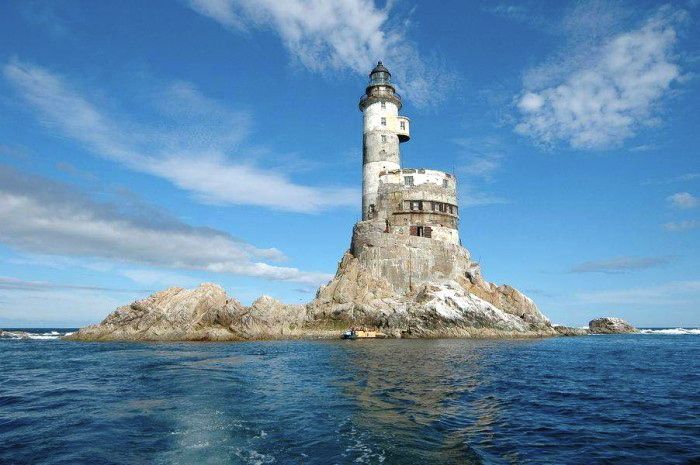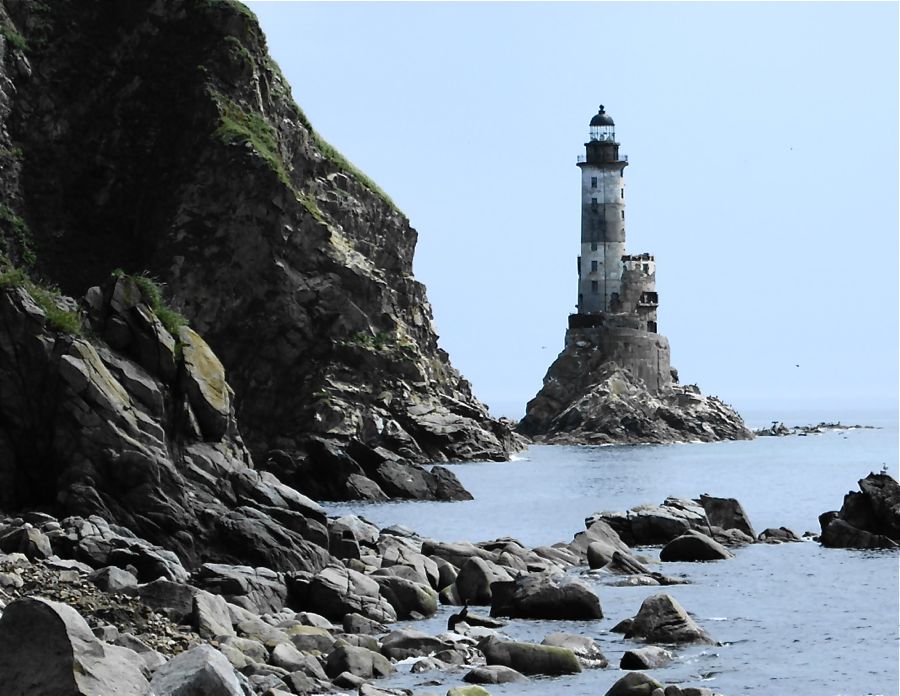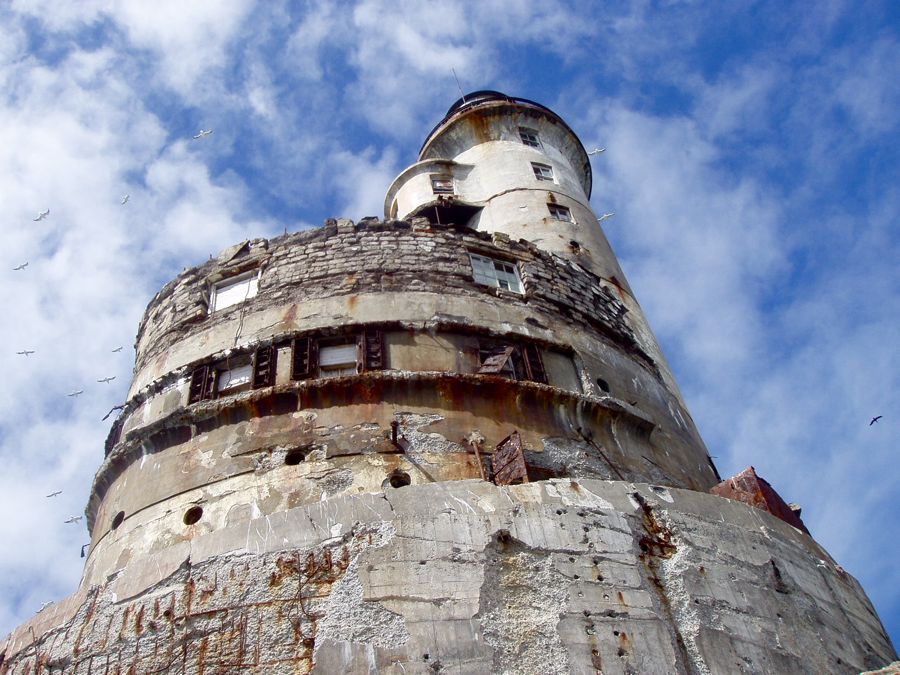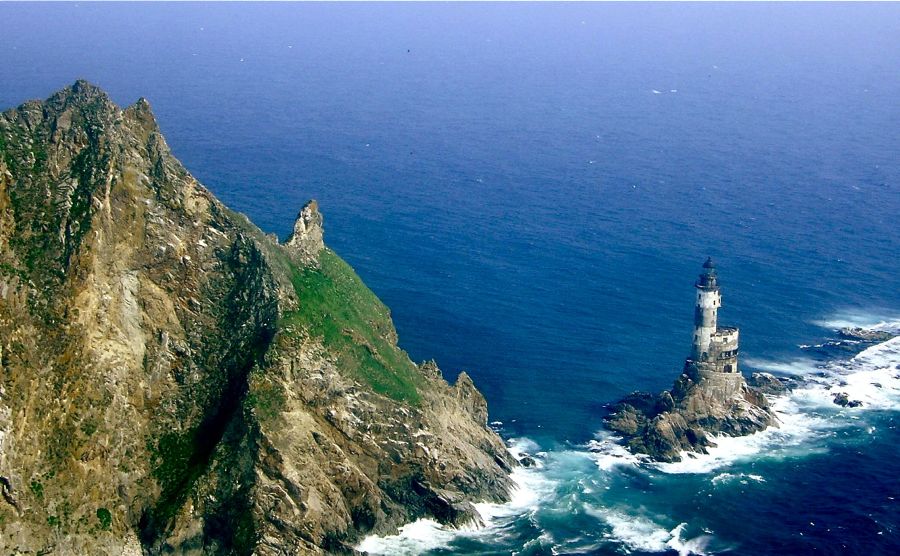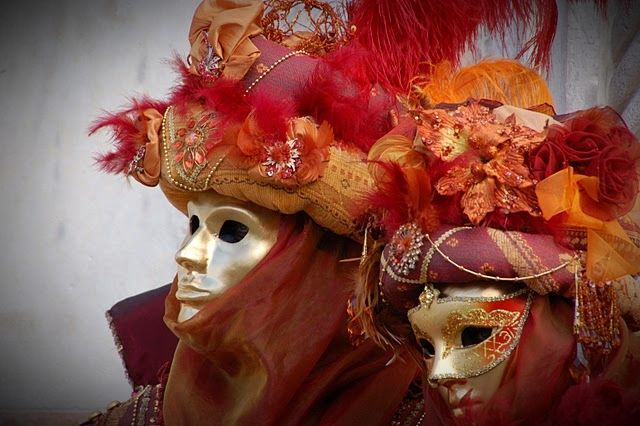Sakhalin is Russia’s largest island, 950 km long and just off the east coast, slicing down the middle between the Sea of Japan and the Sea of Okhotsk. In the 1800′s both Japan and Russia became interested in annexing it, the Russians for use as a penal colony, leading to years of conflict, retrenchment, and buildup of military forces. A ring of light-houses were built on Sakhalin’s rocky coast to signal incoming troop carriers and merchant ships.
FORMIDABLE.
The Aniva light-house was first built by the Japanese as Naka Shiretoko Saki, then in 1905 Russia took it back, nuclearized it, automated it, and left it to do its thing. Some time in the 60′s it became dysfunctional and nobody bothered to fix it. Now its atomic casements have been splintered by vandals and it spews radioactivity into the sea.
ROCKY.
A unique plan was utilized to construct a lighthouse on Cape Aniva. The Aniva Lighthouse was installed in 1939 on the small rock, Sivuchya, not far from the hard-to-reach Cape Aniva.
It is a round concrete tower with a small wing. It stands 31 meters high and the height of the light is 40 meters above sea level. The tower has seven floors. There are diesel engines and accumulator rooms on the first floor; the kitchen and storerooms are on the second floor; the radio station, equipment room and watchmen are on the third floor; and there were living rooms and storerooms on the other floors. A flashing, lighting device was put into operation using a clockwork mechanism. The lighting device was in a bowl with 300 kilos of mercury used as a bearing surface. The pipe with the pendulum (a 270-kilo weight) was at the center of the tower and was wound every three hours to rotate the optical system.
RUSTED, SWARMED BY GULLS.
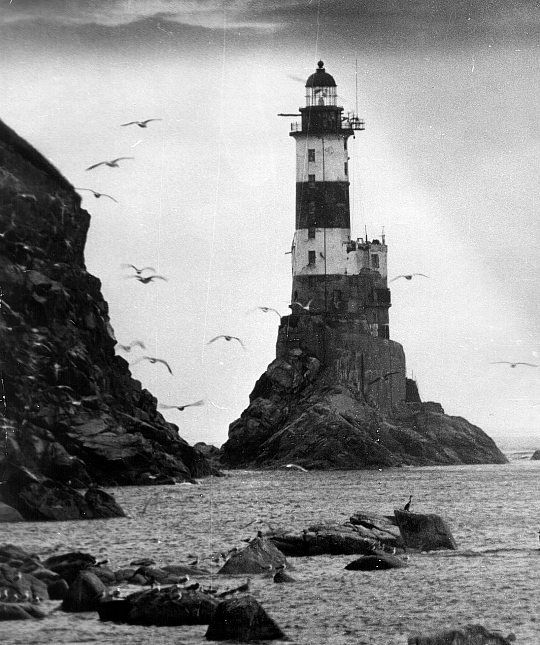
ISOLATED AND PERILOUS.
I read about this location first on English-Russia. He has interior photos taken by an urban explorer, though none that are particularly striking. It seems to me quite insane that anyone would go into this place. It was nuclear, has since surely breached, and is covered in signs in white paint that read- RADIOACTIVE. Phew. I hope they at least took a Geiger counter.
The god-father of modern urban exploration, a guy called Jeff Chapman, founder of the urbex zine ‘Infiltration’ and author of the book ‘Access All Areas’, died at the age of 31 from a rare condition brought on by his exploration of closed old factories. The prolonged exposure to toxic chemicals killed him. Be careful, people.

RADIOACTIVE. THIS MEANS NO.
info and pics from Michael John Grist

